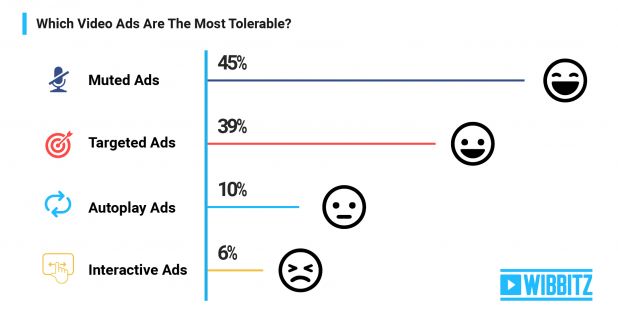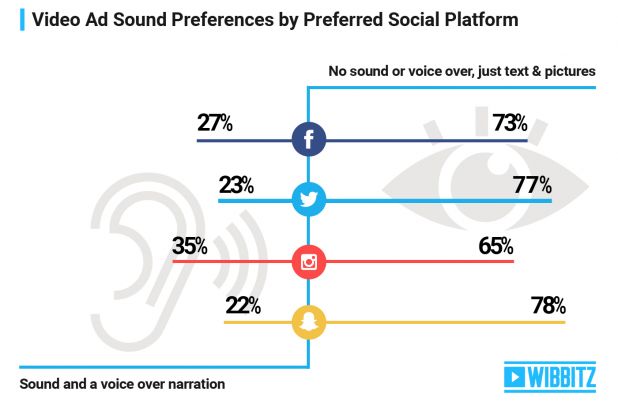Marketers spend a good amount of time studying video advertising trends, looking to attract more viewers. And to help with that is a new report from Wibbitz that may shed some lights on what’s most vital to consumers. The report, titled Personalized, Silent and Mobile: The Video Advertising Trifecta, is based on studies conducted back in March, but features some interesting trends that should be worth noting.
DigiDay previously reported that 85 percent of Facebook video is watched without sound, and Wibbitz confirmed that to some degree, with 45 percent of participants noting that it is the “most tolerable” form of video advertising. Meanwhile, only six percent said they like advertisements that they can interact with.

Wibbitz also addressed key video length, and it seems that the shorter options are more preferred. 70 percent of those polled noted that they would not watch an ad for longer than 10 seconds. As for long-form, 49 percent of respondents said they don’t care for it at all.

The report also produced a number of other findings:
- 15 percent of users who prefer watching video on Facebook are watching on desktops —more than those who prefer to watch via Snapchat (four percent) and Instagram (seven percent) combined. 26 percent of those polled who are infrequent video watchers are usually watching on their desktops.
- Frequent video watchers are more amenable to autoplay than less frequent watchers.
- 34 percent of consumers report that mid-roll ads are much more annoying than both pre-roll ads and ads that play at the conclusion of a video.
- 45 percent of consumers said muted video ads are the most tolerable form of video advertisements, more than any other type. Targeted ads were the second most tolerable type of video ads, at 39 percent.
- Respondents in the more mature age group (45-60+) aren’t as likely to skip over video ads than respondents who are in the 18-29 age group or the 30-44 group.
- People who reported they would be willing to spend 30-60 seconds watching ad videos are more likely to spend that time watching via mobile (60 percent) over desktop (40 percent).

